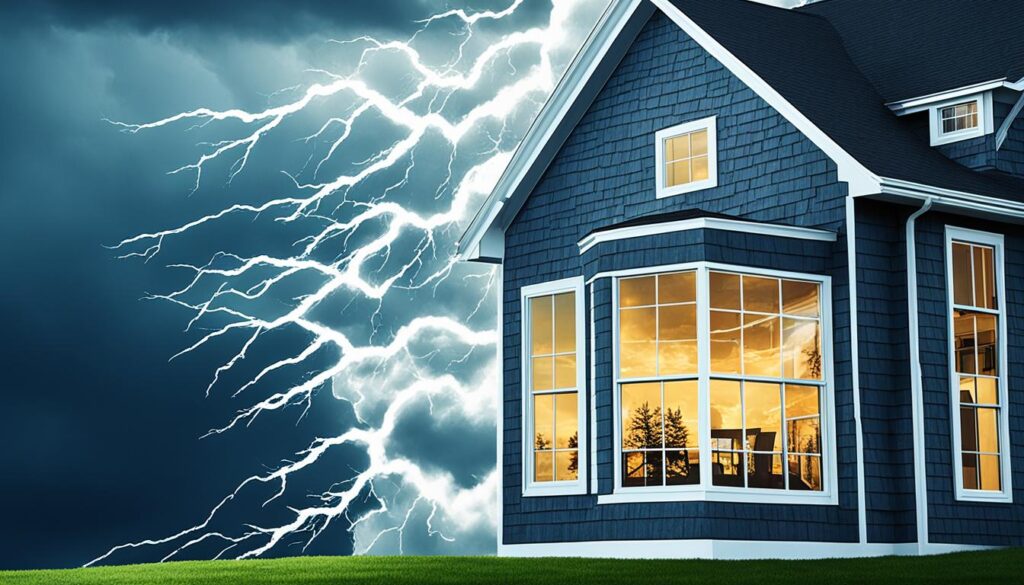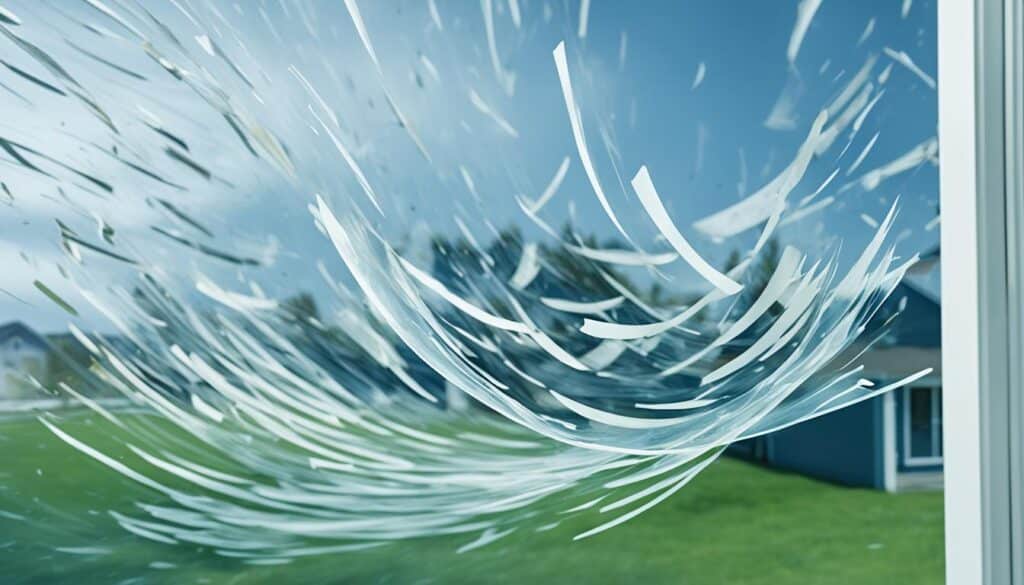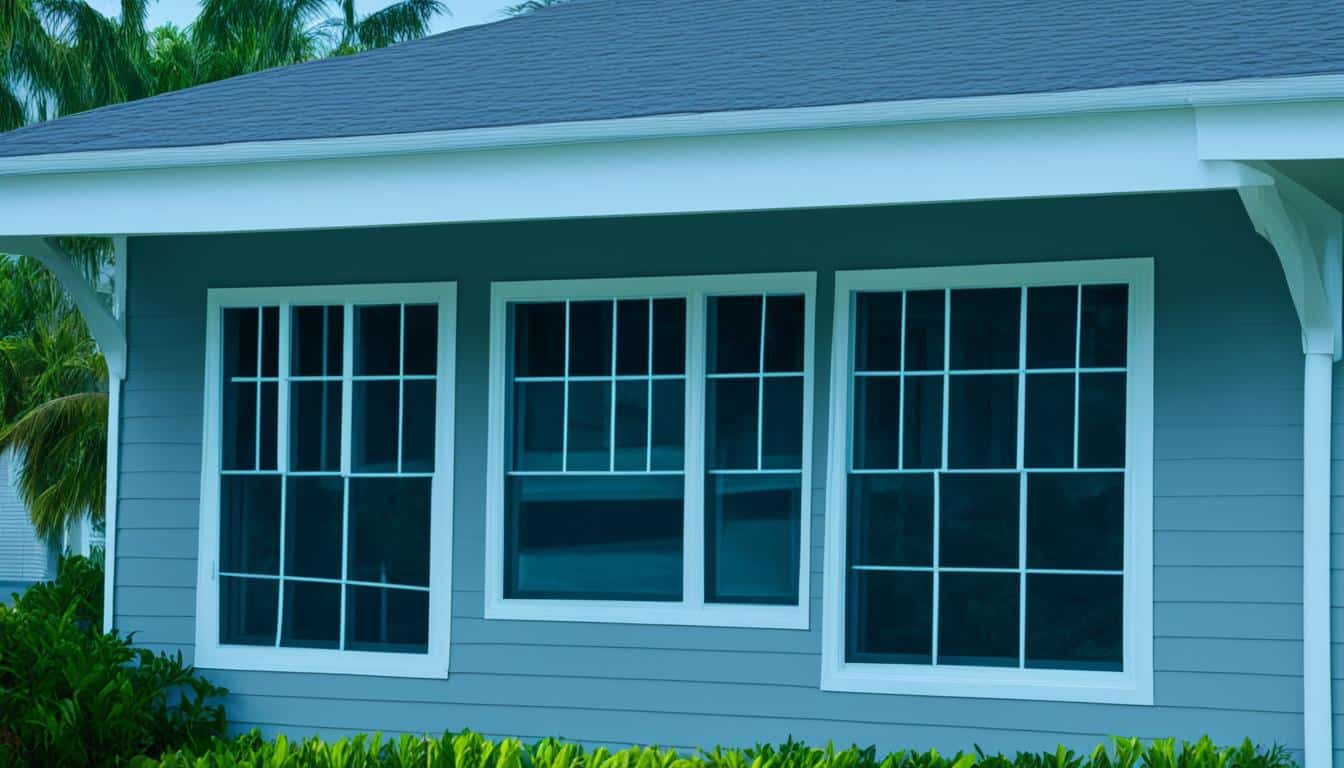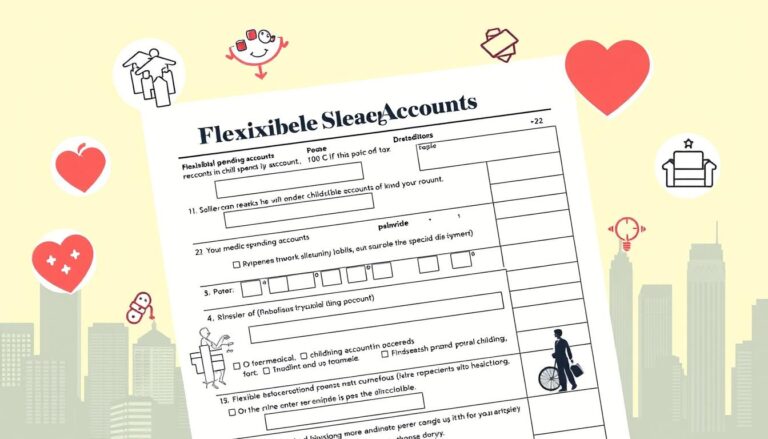Are you considering installing hurricane windows in your home? Not only will these windows protect your home from intense storms, but they may also come with some unexpected tax benefits. Let me share a relatable story to set the stage for the main content.
Imagine this: You’re sitting at home, enjoying a peaceful evening when suddenly, you hear the news of an approaching hurricane. Panic sets in as you think about the safety of your loved ones and the potential damage to your home. Determined to protect your property, you decide to invest in hurricane windows.
After the storm passes, you discover something that brings a smile to your face – the unexpected tax benefits of your hurricane windows. Yes, that’s right! These energy-efficient improvements may make you eligible for a tax credit up to $3,200.
Key Takeaways:
- Qualified energy-efficient improvements may qualify for a tax credit up to $3,200
- The credit equals 30% of certain qualified expenses
- Claim the credit by filing Form 5695 with your tax return
- Keep records of your purchases and expenses related to the improvements
- Maximize your tax savings by strategically planning your improvements
How to Claim the Energy Efficient Home Improvement Credit
Claiming the Energy Efficient Home Improvement Credit is a straightforward process that can help you maximize your tax savings. To begin, you’ll need to file Form 5695, Residential Energy Credits Part II, along with your tax return. This form allows you to claim the credit for the tax year in which the improvements were installed, not just purchased. It’s important to note that the credit amounts to 30% of qualified expenses, subject to maximum annual limits for different categories of improvements.
Remember, the Energy Efficient Home Improvement Credit is nonrefundable, meaning it can offset your tax liability but cannot result in a refund. However, it still provides significant savings by reducing the amount you owe. To ensure a smooth claims process, keep good records of your purchases and expenses related to the improvements. This will help support your eligibility and expedite any potential audits.
When completing Form 5695, pay close attention to the instructions provided by the IRS. Double-check all the necessary information and calculations to accurately claim the credit. The IRS website (irs.gov) is also a valuable resource for additional guidance, forms, and publications to assist you throughout the filing process.
In summary, claiming the Energy Efficient Home Improvement Credit involves filing Form 5695 and adhering to the IRS guidelines. With the credit amounting to 30% of qualified expenses and the potential for significant tax savings, it’s an opportunity worth exploring for homeowners considering energy-efficient upgrades.
Residential Clean Energy Credit
When it comes to improving the energy efficiency of your home, the benefits are twofold: you can decrease your carbon footprint and potentially save money on your taxes. One valuable tax incentive to consider is the Residential Clean Energy Credit. This credit allows homeowners to claim a tax credit for investing in energy improvements for their main home, such as solar, wind, geothermal, fuel cells, or battery storage.
The Residential Clean Energy Credit is especially relevant for homeowners who are looking to upgrade their windows to hurricane windows. These windows not only provide protection during storms but also offer long-term energy efficiency benefits. By installing hurricane windows, you can decrease your energy consumption and lower your utility bills. Moreover, you may be eligible for tax benefits related to your new windows.
The Residential Clean Energy Credit can equal up to 30% of the costs of new, qualified clean energy property. This includes the expenses incurred while replacing your regular windows with hurricane windows. The credit is available for installations from 2022 through 2033. Unlike some other tax credits, there is no annual or lifetime dollar limit for this credit, except for fuel cell property.
To give you a clearer idea of the potential tax benefits, below is a breakdown of eligible expenses for the Residential Clean Energy Credit:
| Qualified Expenses | Credit Percentage |
|---|---|
| New solar panels | 30% |
| Solar water heaters | 30% |
| Wind turbines | 30% |
| Geothermal heat pumps | 30% |
| Fuel cells | 30% (limited to $500 per half-kilowatt of capacity) |
| Battery storage technology | 30% |
The Residential Clean Energy Credit is a nonrefundable credit, which means it can offset your tax liability but cannot result in a refund. However, if you are unable to fully utilize the credit in a given tax year, you can carry it forward to future tax years. This means that even if you don’t receive the full benefit of the credit immediately, you can still take advantage of it in the future.
It’s important to note that to qualify for the Residential Clean Energy Credit, the improvements must meet specific energy efficiency standards and product certifications. It’s recommended to work with reputable contractors who specialize in hurricane window installations to ensure your windows meet the necessary requirements.
Overall, the Residential Clean Energy Credit provides an excellent opportunity to not only enhance your home’s energy efficiency but also earn valuable tax incentives. By installing hurricane windows and taking advantage of this credit, you can enjoy the benefits of improved storm protection, energy savings, and potential tax savings.

Benefits of Hurricane Windows Installation
- Enhanced storm protection
- Increased energy efficiency
- Reduced utility bills
- Potential tax benefits through the Residential Clean Energy Credit
Limits and Qualifications for the Tax Credits
When it comes to tax savings, knowing the limits and qualifications for the credits is essential. Let’s explore the details that will help you make the most of tax deductions related to impact windows and storm-resistant windows.
Energy Efficient Home Improvement Credit
The Energy Efficient Home Improvement Credit offers an opportunity to save on your taxes while making your home more resilient against hurricanes and storms. However, there are limits to be aware of:
| Improvement Type | Annual Limit |
|---|---|
| Doors | $1,500 |
| Windows | $200 |
| Home Energy Audits | $200 |
These limits provide a cap on the amount you can claim for specific improvements. Make sure to keep track of your expenses so you can accurately determine the tax credit you are eligible for.
Residential Clean Energy Credit
The Residential Clean Energy Credit is another opportunity for tax savings when you invest in clean energy improvements for your home. The best part is that there are no annual or lifetime dollar limits for most improvements, except for fuel cell property. This means you can potentially save a significant amount of money on your taxes.
However, it’s important to note that to qualify for the credits:
- Your main home must be an existing home and your principal residence.
- New constructions and rental properties are not eligible.
- Landlords cannot claim these credits.
- The improvements must meet energy efficiency standards and certain product certifications.
Now that you have a clear understanding of the limits and qualifications for the tax credits, you can make informed decisions about your home improvement projects and maximize your tax savings.
How Subsidies and Rebates Affect the Credits
When it comes to claiming tax credits for your hurricane-proof windows, it’s important to understand how subsidies and rebates can impact your eligibility. These financial incentives can affect your qualified property expenses, so it’s essential to consider them when calculating your credits.
Subtracting subsidies and rebates: Public utility subsidies, as well as rebates from manufacturers, distributors, sellers, or installers, should be subtracted from your qualified expenses. These subsidies and rebates act as purchase price adjustments that reduce the total amount you can claim for tax credits.
State energy efficiency incentives: Whether state energy efficiency incentives need to be subtracted from your qualified costs depends on federal income tax law. Some states may require you to deduct these incentives, while others may allow you to keep them as part of your qualified expenses. Be sure to consult the relevant tax regulations and guidelines for your specific state.
Utility payments for clean energy: If you sell back clean energy to the grid and receive utility payments, these payments do not affect your qualified expenses for the tax credits. So, you can rest assured that the income you generate from selling clean energy won’t impact your eligibility for the hurricane-proof windows tax write-off.
It’s essential to note that even if certain resources are labeled as incentives or subsidies, they may still be considered rebates for tax purposes. It’s always wise to consult with a tax professional or refer to the IRS guidelines for accurate and up-to-date information regarding your specific circumstances.
Now, let’s take a moment to visualize the impact of subsidies and rebates on your qualified expenses with a comparison table:
| Qualified Expenses | Subsidies and Rebates | Adjusted Qualified Expenses |
|---|---|---|
| $10,000 | $2,000 | $8,000 |
| $15,000 | $500 | $14,500 |
| $12,000 | $0 | $12,000 |
This table demonstrates how taking into account subsidies and rebates can lower your adjusted qualified expenses. By subtracting these financial incentives from your total expenses, you’ll have a clearer understanding of the amount you can claim for the tax credits.
Strategies to Maximize Your Tax Savings
To make the most of the tax benefits associated with energy efficient windows, it’s important to strategize and optimize your improvements. By following these clever strategies, you can maximize your tax savings and take full advantage of the available deductions.
- Spread out your improvements: Instead of completing all your energy-efficient upgrades in a single year, consider spreading them out over multiple years. This allows you to make the most of the annual aggregate limits and claim the maximum credits for different categories of improvements, including hurricane windows. By strategically timing your upgrades, you can optimize your tax savings.
- Combine complementary improvements: Look for opportunities to combine energy-efficient upgrades that complement each other. For example, if you’re planning to install a new heat pump, optimize your attic insulation first to reduce heating and cooling needs. This synergy between improvements not only enhances your home’s energy efficiency but also enables you to claim multiple tax credits and maximize your overall tax savings.
- Consult with a tax professional: To ensure you’re making the most informed decisions regarding energy efficient windows tax deductions, it’s always wise to consult with a qualified tax professional. They can provide personalized advice based on your specific situation and help you navigate the intricacies of the tax code. An expert can guide you in maximizing your tax savings while staying compliant with IRS regulations.
By implementing these practical strategies, you can optimize your tax savings and enjoy the financial benefits of energy efficient windows. Don’t miss out on the opportunity to both improve your home’s energy efficiency and lighten your tax burden.
Example Tax Savings Strategy:
| Year | Improvement | Qualifying Expense | Tax Credit (30%) |
|---|---|---|---|
| Year 1 | Attic Insulation | $2,000 | $600 |
| Year 2 | Hurricane Windows | $10,000 | $3,000 |
| Year 3 | LED Lighting | $1,500 | $450 |
This table illustrates a tax savings strategy where energy-efficient improvements are strategically spread over three years. By taking advantage of the tax credits year by year, the homeowner can maximize their tax savings and enjoy a total tax credit of $4,050 over the three-year period.

Who Qualifies for the Credits
To qualify for the credits, you must be the owner of a principal residence that is an existing home. The home must be located in the United States. Landlords and owners of newly constructed homes do not qualify. The credits are specifically for individuals who make energy-efficient improvements to their main homes. The improvements must meet certain energy efficiency standards and product certifications. Follow the eligibility requirements outlined by the IRS to ensure you qualify for the credits.
| Qualification Criteria | Requirements |
|---|---|
| Ownership | You must be the owner of a principal residence that is an existing home. |
| Location | Your home must be located in the United States. |
| Exclusion | Landlords and owners of newly constructed homes do not qualify. |
| Focus | The credits are specifically for individuals who make energy-efficient improvements to their main homes. |
| Standards | The improvements must meet certain energy efficiency standards and product certifications. |
If you meet these criteria, you may be eligible for the tax credits related to hurricane windows. Make sure to consult the IRS guidelines and consult a tax professional to ensure you comply with all the necessary requirements.
Remember, taking advantage of these tax credits can not only save you money but also help reduce your carbon footprint by making your home more energy-efficient.

Resources to Help You Claim the Credits
When it’s time to file your tax return and take advantage of the tax benefits of hurricane windows and window replacement tax incentives, the IRS has provided resources to assist you. Using IRS Form 5695, Residential Energy Credits, you can easily claim the credits for your qualified energy-efficient improvements. This form includes detailed instructions and guidance on how to calculate and claim the credits properly. So, don’t worry, you don’t have to navigate the complex tax laws on your own!
To ensure a smooth process, it’s essential to keep good records of your purchases and expenses related to the improvements. These records will help substantiate your claims and documentation during the tax filing season. Remember, accurately claiming these credits can lead to substantial savings, so it’s worth taking the time to organize and maintain your receipts and invoices.
If you need additional information and resources, the IRS website (irs.gov) is a valuable online hub. There, you can find specific details about qualifying residences, requirements for taxpayers using their homes for business purposes, and other relevant topics. Additionally, Energy.gov is an excellent resource for comparing credit amounts and accessing comprehensive energy efficiency information. These online platforms provide the necessary tools and knowledge to navigate the tax benefits of hurricane windows and window replacement tax incentives successfully.








